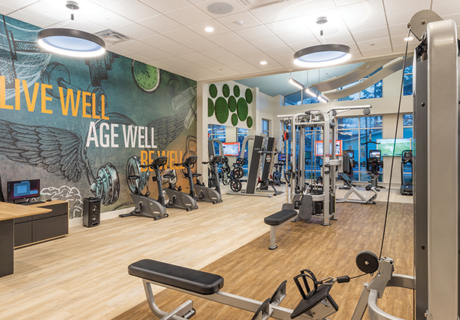Fact Finder: Anne Barrett, Pepper Institute on Aging and Public Policy
Environments for Aging: As a professor and the director of the Pepper Institute on Aging and Public Policy, tell us about your work and the research you’re conducting on aging.
Anne Barrett: The Pepper Institute is the multidisciplinary hub for aging research at Florida State University, where faculty and students conduct research on a wide range of aging issues with implications for public policy. For example, we’re examining economic and health disparities in later life, manifestations and consequences of ageism, features of social and physical environments shaping older adults’ well-being, and early life experiences influencing later life. The institute also supports the work of two organizations serving Florida’s aging community: The Safe Mobility for Life Coalition, a program funded by the Florida Department of Transportation that’s focused on improving transportation options for our aging population, and The Osher Lifelong Learning Institute at Florida State University, which offers dozens of classes each year to its nearly 1,200 members.
What factors most commonly influence individuals’ attitudes toward aging?
Large-scale surveys examining people’s views on aging find that more positive attitudes are often connected with having more frequent and varied interactions with older adults and more knowledge about aging. Smaller-scale studies, particularly laboratory-based experiments, also reveal that when people are exposed to positive images of aging they tend to report better attitudes on aging and are less likely to apply negative age stereotypes to themselves. These findings raise the possibility that we could reset prevailing views of aging by presenting more positive images and enhancing people’s opportunities to form meaningful cross-generational relationships. Creating spaces for such interaction is a challenge with age-segregated housing approaches, but finding a solution could have individual and societal payoffs.
How do those views affect public policies, and what do you hope to change through your work?
Ageism manifests in many ways, from seemingly harmless phrases like “senior moment” and “silver tsunami,” to age discrimination in the paid labor force. These factors collectively contribute to creating an environment that makes growing old more challenging for us all. At the individual level, holding more negative views about aging predicts all sorts of undesirable outcomes, including worse mental and physical health and even shorter life expectancy. But ageism also influences public policies by making issues of later life unpopular to discuss. We seem to be especially reluctant to discuss issues facing those in their 80s, when many people start to need help with some activities like driving, cooking, or dressing. I hope that my work contributes to encouraging more honest portrayals and discussions of aging.
How do features of our physical and social environments influence our well-being in later life?
Regardless of our level of functional ability, we all want to feel confident navigating our physical environments and engaging in activities of our choosing within them. Supportive social environments are just as important. Not surprisingly, feeling loved and cared for is one of the strongest predictors of well-being. Health-enhancing environments are those that can help to cultivate these feelings.
What do you see as basic components any built environment should provide to best support the sociology of aging?
Our built environments should support and inspire us at any age. They can enhance our well-being when they invite opportunities for many different types of activities and social interactions, and for people with varying levels of functional ability. They also should encourage us to make our own choices rather than have them dictated by the structure of the environment. Research consistently supports the importance to our well-being of having control in making decisions, from major ones like when to retire and where to live to more everyday choices about meaningful ways to spend time. In reality, many older adults, especially those with few economic resources, lack the freedom to make such decisions. Built environments for our aging population that are centered on the ideas of affordability, support, and choice would enhance all seniors’ ability to thrive.
Anne DiNardo is executive editor of Environments for Aging. She can be reached at ANNE.DINARDO@EMERALDEXPO.COM.





